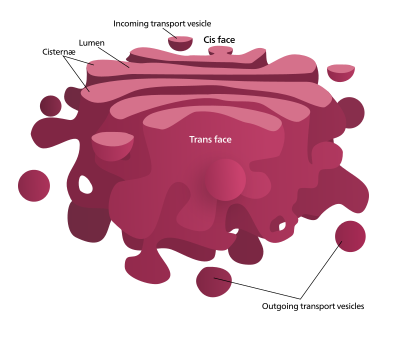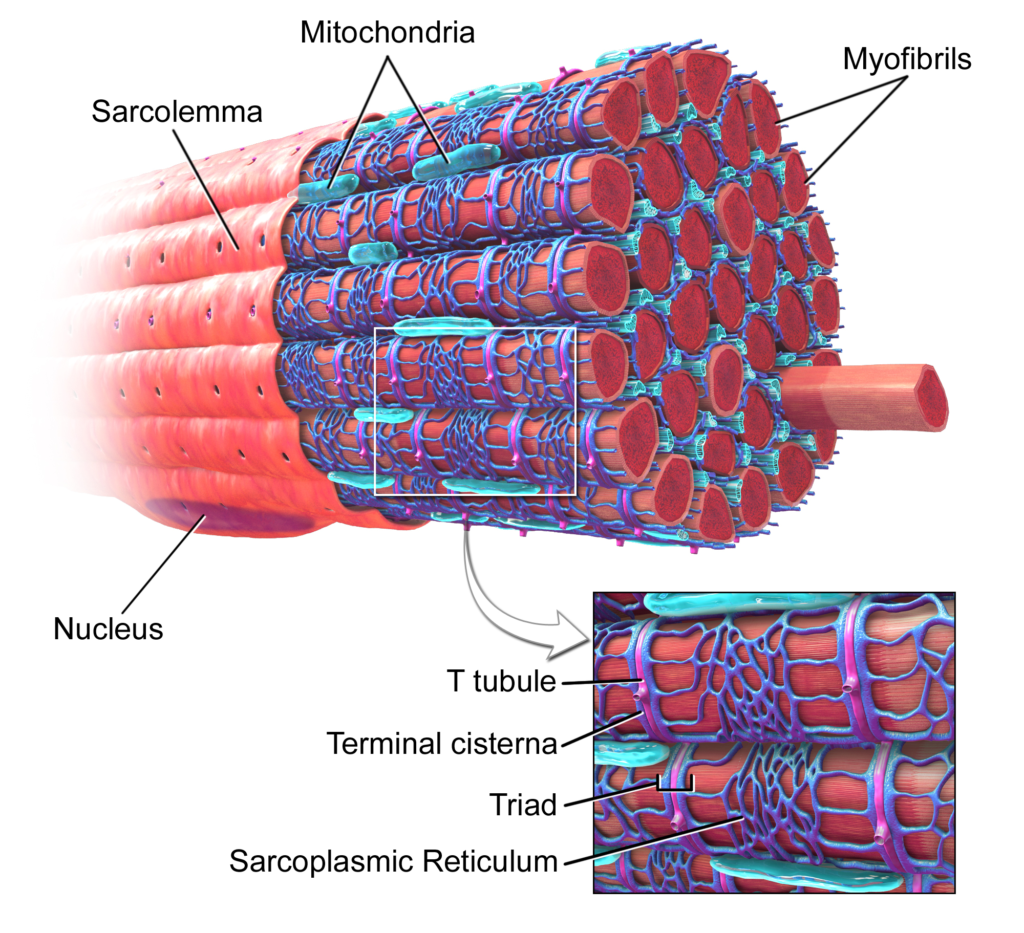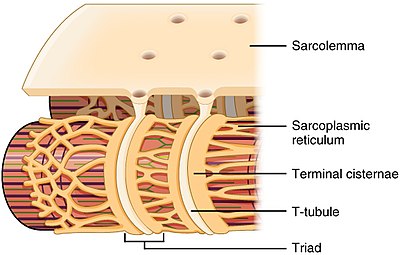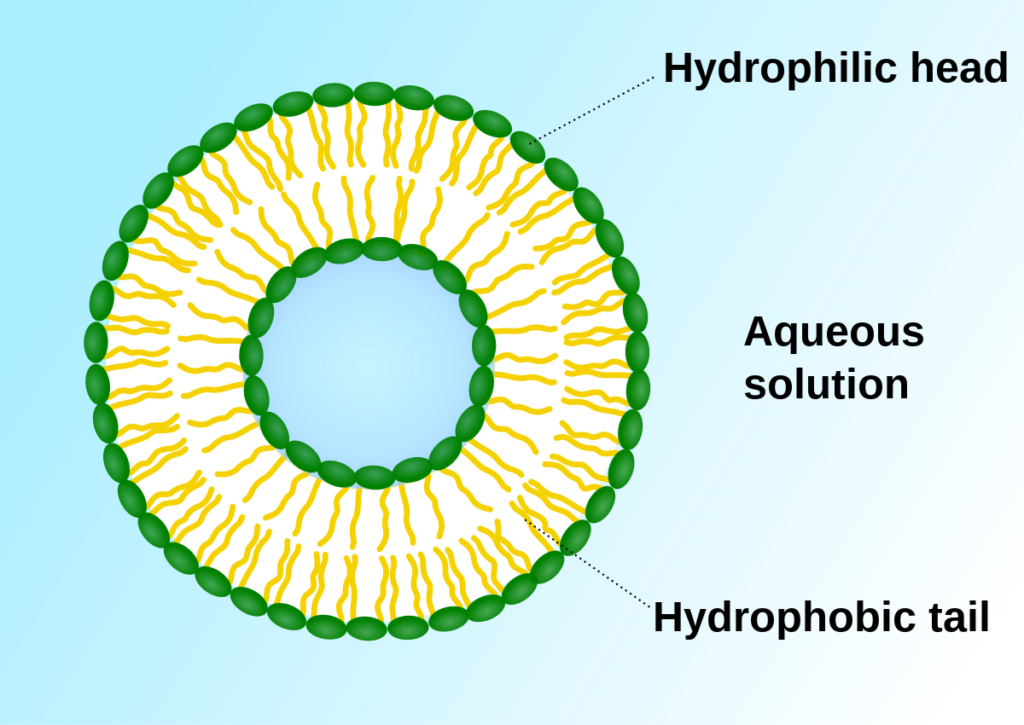INTRODUCTION
Golgi Appratus
• Golgi apparatus as a bustling sorting and distribution center within the cell.
• He described it as a densely stained reticular structures present near the nucleus of the cell.
• Therefore, these were given the name Golgi bodies, after his name.
• It is present in eukaryotic cells, except in mature sieve tubes of plants, mature RBCs of mammals, sperm cells of bryophytes and pteridophytes, etc.
• In plants it is called dictyosomes as golgi apparatus is made up of unconnected units
• The Golgi apparatus, often referred to as the “post office” of the cell, is a fascinating organelle with intricate functions that are essential for cellular organization and function.
• Golgi apparatus as a bustling sorting and distribution center within the cell.
• Golgi apparatus comprises a series of flattened membranous sacs, called cisternae, stacked like pancakes, with distinct functional regions representing different processing stages.
• Golgi apparatus ensures the precise delivery of molecules to their intended locations within the cell, contributing to the harmony and efficiency of cellular life.

STRUCTURE
- There are four parts of Golgi complex, viz. cistermae, tubles, vesiclesand golgian vacuoles
CISTERNAE:-
- These are flattened sac-like structures stacked on one another. There are usually 4-5 cisternae present in a stack. These cisternae resemble with smooth endoplasmic reticulum.
- The golgi cisternae are concentrically arranged near the nucleus with distinct convex cis or the forming face and concave trans or the maturing face. The cis and the trans faces of the organelles are entirely different, but interconnected.
- Cisternae, the structural components of the Golgi apparatus, are not just static compartments but dynamic entities essential for its function.
- Each cisterna is like a distinct district within this cellular metropolis, playing a specialized role in processing and sorting molecules as they navigate through the Golgi complex.
- The Golgi cisternae can be conceptualized as a series of interconnected factories, each specializing in specific modifications and transformations of cargo molecules.
- Each cisterna, a flurry of biochemical activities takes place, orchestrated by resident enzymes and regulatory proteins.
- The dynamic nature of the Golgi cisternae allows them to adapt to changing cellular demands and environmental cues.
- The Golgi cisternae are not merely structural elements but dynamic hubs of cellular activity,
- The Golgi cisternae molecules undergo intricate transformations and sorting processes essential for cellular function and homeostasis.

TUBULES
- These are small, flat, interconnecting structures arising from the periphery of cisternae due to fenestrations.
- The tubules of the Golgi apparatus, though often overshadowed by the more conspicuous cisternae, play a crucial and dynamic role in cellular organization and function.
- The tubules of the Golgi apparatus as the hidden conduits, the silent movers behind the scenes of cellular activity.
- The tubules of the Golgi apparatus form a labyrinthine network that extends throughout the entire Golgi complex and beyond, reaching into the surrounding cytoplasm like tentacles probing the cellular landscape.
- Tubules serve as dynamic highways for molecular traffic, facilitating the transport of molecules between different regions of the Golgi apparatus and connecting it to other cellular compartments.
- The significance of the Golgi tubules goes beyond mere transportation; they are active participants in the intricate dance of molecular processing and sorting that takes place within the Golgi complex.
- The Golgi tubules ferry cargo molecules, enzymes, and vesicles, ensuring the seamless flow of materials essential for cellular function.
- Golgi tubules exhibit remarkable plasticity and adaptability, capable of dynamic rearrangements in response to cellular cues and environmental stimuli. They can elongate, contract, branch, and fuse, reshaping the architecture of the Golgi apparatus to meet the changing demands of the cell.
- The tubules of the Golgi apparatus are also intimately involved in inter-organelle communication and coordination, forming physical and functional connections with other cellular compartments such as the endoplasmic reticulum, endosomes, and plasma membrane.
- These connections facilitate the exchange of molecules, signals, and membrane components, contributing to the integration and coordination of cellular activities.
- The tubules embody its dynamic and versatile infrastructure, essential for the organization, function, and adaptability of the cellular machinery. Their intricate network, spanning the cellular landscape like an intricate web, underscores the complexity and elegance of cellular organization and function.

VESICLES
- These are small rounded sacs, present at the edges of cisternae in clusters. These are pinched off from the tubules.
- Vesicles, the dynamic carriers of molecular cargo, are integral components of the Golgi apparatus, serving as the cellular “shuttles” that transport molecules to their intended destinations
- Visualize the Golgi apparatus as a bustling hub of cellular activity, with vesicles akin to the nimble couriers darting through its labyrinthine corridors.
- These tiny membrane-bound sacs are the workhorses of intracellular transport, shuttling a diverse array of molecules between the Golgi apparatus and other cellular compartments, as well as to and from the cell’s exterior.
- Golgi vesicles ferry newly synthesized proteins, lipids, and carbohydrates from the endoplasmic reticulum (ER) to the Golgi apparatus for further processing and sorting.
- At the Golgi apparatus, they undergo a series of modifications, including glycosylation, sulfation, and proteolytic cleavage, before being packaged into specialized transport vesicles for delivery to their final destinations.
- Vesicles are not merely passive carriers; they are dynamic entities capable of rapid fusion and fission events that regulate their formation, trafficking, and release.
- Golgi vesicles play a crucial role in maintaining cellular homeostasis and responding to environmental cues.
- They participate in the regulated secretion of hormones, enzymes, and signaling molecules, as well as the replenishment of membrane components and organelles
- Additionally, they contribute to cellular processes such as cell migration, division, and signaling by transporting key regulatory molecules to specific cellular locales.
- Golgi vesicles ensure the seamless flow of molecules within the cellular landscape, sustaining the vibrant activity of the cellular community.

GOLGIAN VACUOLES
- These are large, spherical vacuoles produced at maturing face. These are filled with some granular or amorphous substances. Some of them function as lysosomes.
- The eukaryotic cells possess Golgi apparatus but, many fungi and ciliated protozoans lack well formed Golgi bodies in fungi, it is unicisternal.
- Golgian vacuoles, also known as Golgi-derived vesicles or vacuolar compartments, are intriguing structures within the Golgi apparatus that contribute to its dynamic and diverse functions.
- Golgian vacuoles serving as specialized storage units or temporary holding chambers within this cellular production facility.
- These vacuoles are dynamic compartments that arise from the Golgi apparatus and participate in various cellular processes, including protein trafficking, membrane remodeling, and stress response.
- Golgian vacuoles can be envisioned as transient bubbles that bud off from the Golgi stacks, carrying specific cargo molecules or serving as reservoirs for molecular components awaiting further processing.
- One of the remarkable features of Golgian vacuoles is their versatility and adaptability in response to cellular demands.
- Flexibility enables Golgian vacuoles to participate in diverse cellular processes and adapt to changing cellular needs.
- Golgian vacuoles play a role in quality control and surveillance within the Golgi apparatus, serving as checkpoints for monitoring the integrity and functionality of molecules.
- They can selectively sequester misfolded or damaged proteins, preventing their premature release or aggregation and facilitating their degradation or recycling by cellular quality control mechanism
- They can store and release calcium ions (Ca^2+), regulate pH, and participate in the cellular response to stressors such as nutrient deprivation, oxidative stress, or pathogens.
- Golgian vacuoles optimize the efficiency and adaptability of the Golgi apparatus, ensuring the smooth flow of molecular traffic within the cellular landscape.
FUNCTIONS OF GOLGI APPARATUS
(i) The important function of Golgi apparatus is to process, package and transport the materials for secretions.
(ii) The packaged material is delivered either to the intracellular targets i.e within the cell or secreted to extracellular target i.e outside the cell.
(iii) The material to be secreted moves from ER to to the Golgi apparatus in form of transitional vesicles
(iv) These vesicles then fuse with the cis face and move towards the maturing face of the golgi apparatus.
(v) Therefore, Golgi apparatus is closely associated with ER in structural as well as functional aspects.
(vi) Proteins are modified in the cisternae of golgi apparatus before they are released from its trans face.
(vii) Golgi apparatus is the important site of formation of glycoproteins (glycosylation of proteins) and glycolipids (glycosidation of lipid).
(viii) Root cap cells are rich in golgi bodies which secrete mucilage for the lubrication of root tip.
(ix) Acrosome of the sperm is modified Golgi apparatus.
(x) Formation of plasma membrane during cytokinesis.
- The Golgi apparatus is a cellular organelle found in eukaryotic cells. It is typically located near the nucleus and consists of a series of flattened membrane-bound sacs called cisternae.
- The Golgi apparatus has several functions, including protein modification, sorting, and trafficking, lipid metabolism, formation of lysosomes, and calcium homeostasis.
- Proteins synthesized in the endoplasmic reticulum (ER) are transported to the Golgi apparatus, where they undergo post-translational modifications such as glycosylation, phosphorylation, and proteolytic cleavage.
he Golgi apparatus sorts proteins into different vesicles based on their destination within or outside the cell. It directs proteins to specific cellular compartments, such as the plasma membrane, lysosomes, or secretory vesicles, for secretion or incorporation.
The Golgi apparatus is involved in the modification and synthesis of lipids, including the processing of lipids synthesized in the ER and the formation of complex lipids and lipoproteins
he Golgi apparatus plays a role in the formation of lysosomes by packaging and modifying enzymes synthesized in the ER into vesicles called lysosomes. These lysosomes then fuse with endocytic vesicles or autophagosomes for degradation.
- The Golgi apparatus contains calcium pumps and channels that regulate the concentration of calcium ions within its lumen. It releases calcium ions in response to cellular signals, which can trigger various cellular processes.